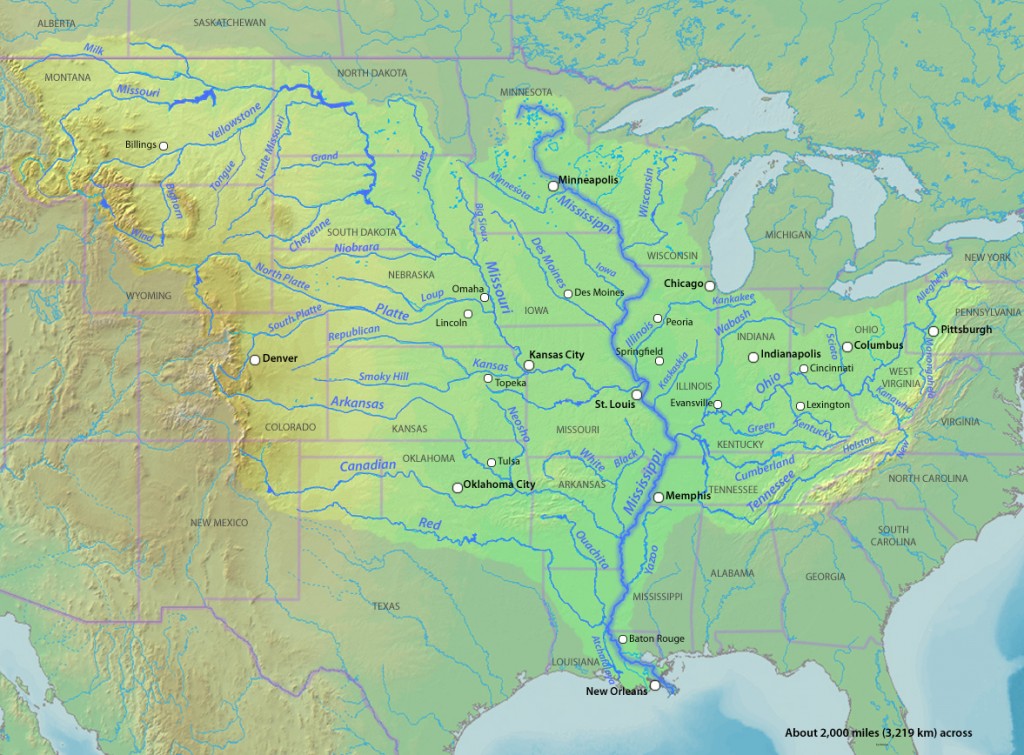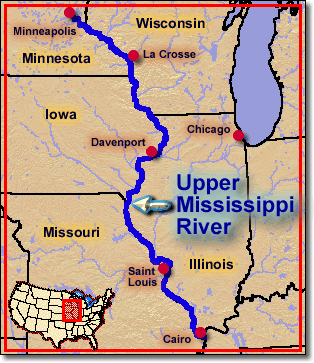
Uncharted Territories of the Soul: A Traveler’s Guide to Native American Maps of the Mississippi River Region
Forget the meticulously gridded, politically bordered maps you’re accustomed to. To truly understand the Mississippi River region – its history, its spirit, and its original inhabitants – you must first shed your Eurocentric cartographic lens. What if I told you that the very land beneath your feet, the winding rivers, the towering mounds, and the ancient forests, were themselves living maps, imbued with millennia of knowledge, sacred pathways, and profound interconnectedness? This isn’t just a historical curiosity; it’s an invitation to embark on a transformative journey, traversing landscapes that once whispered stories and guided nations long before European explorers ever dipped a paddle into the "Father of Waters."
My recent exploration into the indigenous cartography of the Mississippi River basin wasn’t just a trip; it was a re-education. It was a profound "review" of a landscape I thought I knew, revealing layers of meaning and navigational sophistication that redefine our understanding of pre-Columbian America. This isn’t about finding a specific, framed parchment in a museum, though those exist and are invaluable. It’s about experiencing the concept of Native American mapping – a holistic, living, and often spiritual understanding of territory that shaped entire civilizations.
The Mississippi: A Living Arterial Map

For countless Native American nations, the Mississippi River was far more than a geographical feature; it was the central artery of life, trade, communication, and spiritual sustenance. Its tributaries, like the veins of a vast circulatory system, connected diverse cultures from the Great Lakes to the Gulf of Mexico, from the Appalachian foothills to the Great Plains. When we speak of Native American maps of this region, we’re not just talking about drawings on bark or hide, though those were certainly made. We’re talking about an embodied knowledge, passed down through generations, etched into oral traditions, expressed in monumental earthworks, and woven into the very fabric of daily life.
Imagine a map that doesn’t just show you where a river is, but how it flows, when it floods, what resources it provides, and which spirits reside within its banks. This was the indigenous understanding. Their "maps" were often experiential, mnemonic devices: song lines, sacred stories, petroglyphs, and even the precise layout of entire cities or ceremonial complexes. These weren’t tools for claiming ownership in the European sense, but for navigating, sustaining communities, honoring sacred sites, and maintaining a harmonious relationship with the land.
Cahokia Mounds: Where the City Itself Was a Map
Our journey into this cartographic paradigm begins not with a scroll, but with a city. Just east of modern-day St. Louis, Missouri, lies Cahokia Mounds State Historic Site, a UNESCO World Heritage site and an absolute must-visit. This was the largest and most sophisticated pre-Columbian urban center north of Mexico, a thriving metropolis of up to 20,000 people around 1050-1200 CE.

The Review: Visiting Cahokia is a breathtaking experience that immediately recontextualizes your understanding of North American indigenous history. What struck me most was how the entire city functioned as a massive, intentional map. The layout of its dozens of mounds, plazas, and residential areas was not random; it was meticulously planned, aligning with celestial events and cardinal directions. Monks Mound, the largest earthwork in North America, anchors this immense urban blueprint. From its summit, the grid of the city, the "Woodhenges" (ancient solar calendars), and the surrounding landscape unfold, revealing a profound understanding of astronomy, engineering, and territorial organization.
The interpretive center provides crucial context, showcasing artifacts and explaining the sophisticated Mississippian culture that built this monumental settlement. But the true "map" is the landscape itself. Walking the footpaths, climbing Monks Mound, and standing in the vast Grand Plaza, you begin to grasp the sheer scale of the vision. This was a place where trade routes converged, where diverse peoples met, and where an advanced society managed its resources and cosmos through a "map" that was physically manifested on the earth. It’s a review of human ingenuity that defies simplistic narratives of "primitive" societies. The sheer ambition and precision of Cahokia speak volumes about a people who not only understood their world but sculpted it to reflect their deep knowledge.
Effigy Mounds: Stories Etched in the Landscape
Traveling north along the Mississippi, into northeastern Iowa, we encounter another powerful form of indigenous cartography at Effigy Mounds National Monument. Here, the landscape itself is adorned with over 200 prehistoric mounds, many shaped like animals – bears, birds, and even abstract forms.

The Review: This site offers a stark contrast to Cahokia’s urban sprawl, yet it reveals an equally profound and perhaps more poetic form of mapping. Hiking through the quiet, forested bluffs overlooking the Mississippi, you encounter these enigmatic earthworks. They are not merely burial sites; they are statements. For the indigenous peoples who built them, including ancestors of the Ho-Chunk and Iowa nations, these effigies likely served multiple purposes: territorial markers, clan symbols, spiritual conduits, and even astronomical observatories.
Imagine navigating a vast wilderness, not with compass and sextant, but by recognizing the profile of a bear mound on a ridge, knowing it signifies a particular hunting ground or sacred space. Or seeing a bird effigy, understanding it marks a flight path or a ceremonial gathering place. These mounds were a mnemonic map, a way to imprint critical information onto the landscape itself, ensuring that generations understood the contours of their world – not just physically, but spiritually and culturally.
The visitor center and ranger-led programs are excellent, providing insight into the cultural significance of these mounds. But the real "review" comes from the hike. As you walk among the effigies, the silence broken only by birdsong, you can almost feel the weight of history. It forces you to slow down, to observe, and to reconsider what constitutes a "map." It’s a journey into a worldview where every hill, every river bend, every animal shape sculpted into the earth, held meaning and communicated vital information. It’s a map not of lines and labels, but of stories and spirits.
Moundville: A Southeastern Hub of Connection
Venturing south along the Mississippi’s vast network, into west-central Alabama, we find Moundville Archaeological Park. This was another major Mississippian cultural center, flourishing from around 1000 to 1450 CE, strategically located on the Black Warrior River, a tributary of the Mobile River system that ultimately flows into the Gulf of Mexico.
The Review: Moundville, though perhaps less known than Cahokia, is equally impressive and crucial for understanding the interconnectedness of the broader Mississippian world. The park boasts 29 platform mounds arranged around a central plaza, testament to a highly organized society. What makes Moundville particularly relevant to our discussion of maps is its role as a major regional ceremonial and trade center. Artifacts discovered here – shell gorgets, effigy vessels, copper plates – show clear connections to cultures as far north as Cahokia and as far west as the Plains.

This extensive trade network, facilitated by the river systems, implies a sophisticated, albeit unwritten, cartography. People navigated these vast distances, understanding the routes, the resource zones, and the cultural territories of their neighbors. The layout of Moundville itself, with its carefully placed mounds and plazas, served as a local map, guiding inhabitants and visitors through its ceremonial spaces. The excellent museum at Moundville brings these connections to life, displaying incredible artifacts and explaining the intricate social and spiritual world of its ancient inhabitants.
Walking the grounds, you get a palpable sense of a place designed for both practical and ceremonial purposes. The reconstructed residential and ceremonial structures offer a glimpse into daily life, while the sheer scale of the earthworks speaks to a communal effort guided by a profound understanding of their world. Moundville is a review of how communities, even without "written maps" in the European sense, developed intricate systems for managing vast territories and maintaining extensive networks of trade and cultural exchange, all centered around the life-giving rivers.
The Enduring Legacy: Mapping the Present
The journey doesn’t end with ancient mounds. The spirit of Native American cartography lives on in the oral traditions, languages, and land management practices of contemporary tribal nations throughout the Mississippi River region. For many indigenous peoples, the land itself is a repository of history and identity. Modern tribal maps often integrate ancestral knowledge, spiritual sites, and traditional place names, offering a powerful counter-narrative to colonial cartography.
To truly "review" Native American maps of the Mississippi River region is to acknowledge this living legacy. It means seeking out contemporary cultural centers, supporting tribal enterprises, and listening to the voices of indigenous peoples who continue to be the stewards of these ancient landscapes. It means understanding that every bend in the river, every rise in the land, every forest grove, holds a story, a purpose, and a place within a vast, interconnected indigenous map.
Embarking on Your Own Cartographic Revelation
If you’re a traveler seeking depth, meaning, and a profound connection to the land, I wholeheartedly recommend this journey. It’s not about checking off tourist boxes; it’s about shifting your perspective.
Practical Tips for Your Journey:
- Start with the Big Three: Cahokia, Effigy Mounds, and Moundville offer the most comprehensive and accessible entry points into this world.
- Go Beyond the Maps: Engage with the interpretive centers, read the historical markers, and consider taking guided tours. The context is crucial.
- Respect the Sacred: These are not just archaeological sites; they are sacred places for many indigenous peoples. Tread lightly, be mindful, and show respect.
- Listen to the Land: Spend time in quiet contemplation. Try to imagine the landscape as it was, and how it would have been understood by its original inhabitants.
- Seek Out Contemporary Voices: If possible, visit tribal museums or cultural centers in the region to learn about the ongoing connection of Native American nations to these ancestral lands.
- Read Widely: Supplement your visits with books and academic articles on Native American cartography, history, and culture. Scholars like Gregory Waselkov, George E. Stuart, and Mark Warhus offer excellent insights.
This journey is a profound "review" of a continent’s hidden history. It challenges the very definition of a map, revealing a world where knowledge of the land was woven into culture, spirituality, and the physical environment itself. By stepping onto these ancient landscapes, by engaging with the monumental expressions of indigenous understanding, you’re not just traveling through the Mississippi River region; you’re traveling through time, rediscovering the uncharted territories of the soul, guided by the wisdom of America’s first mapmakers.
